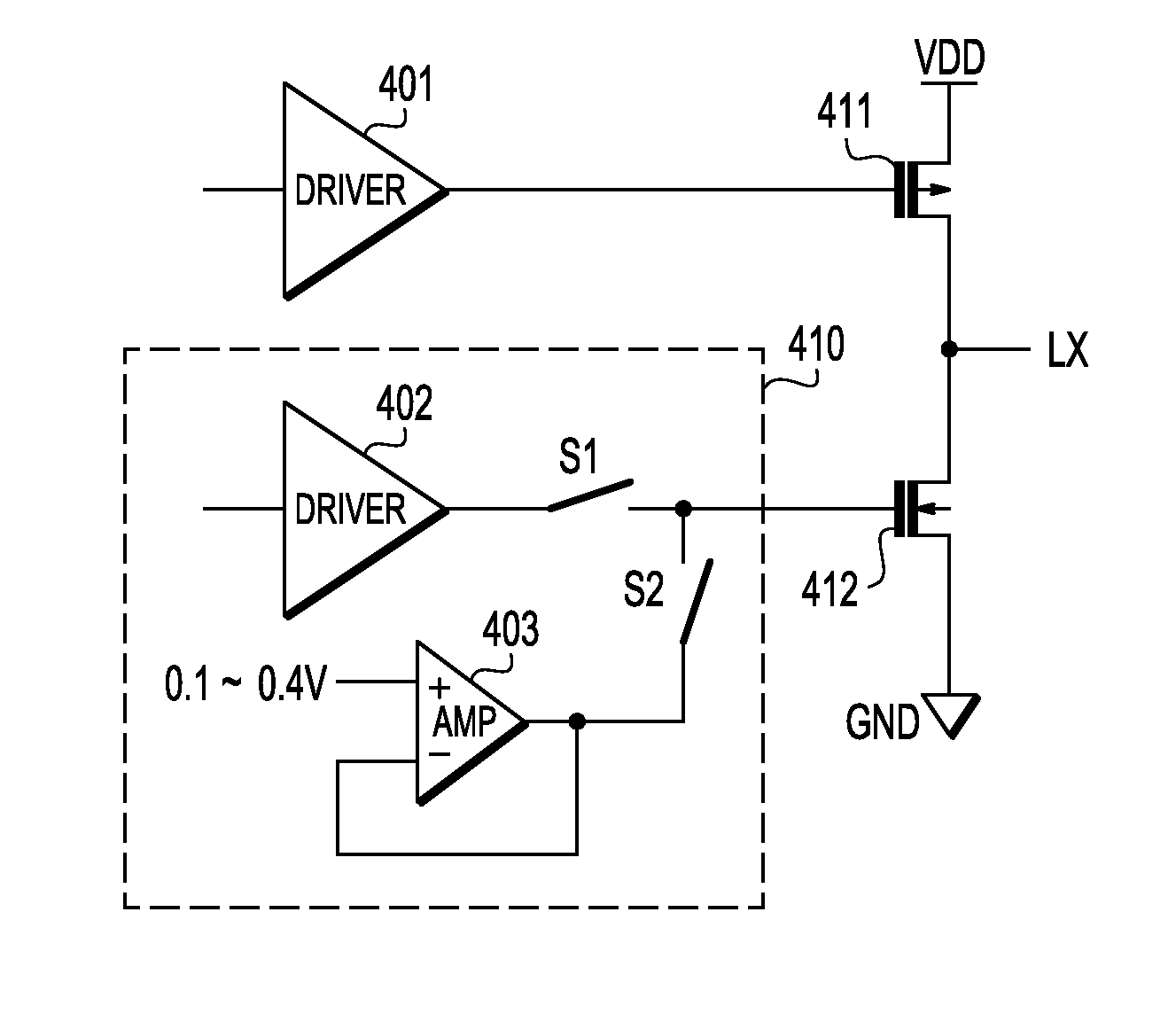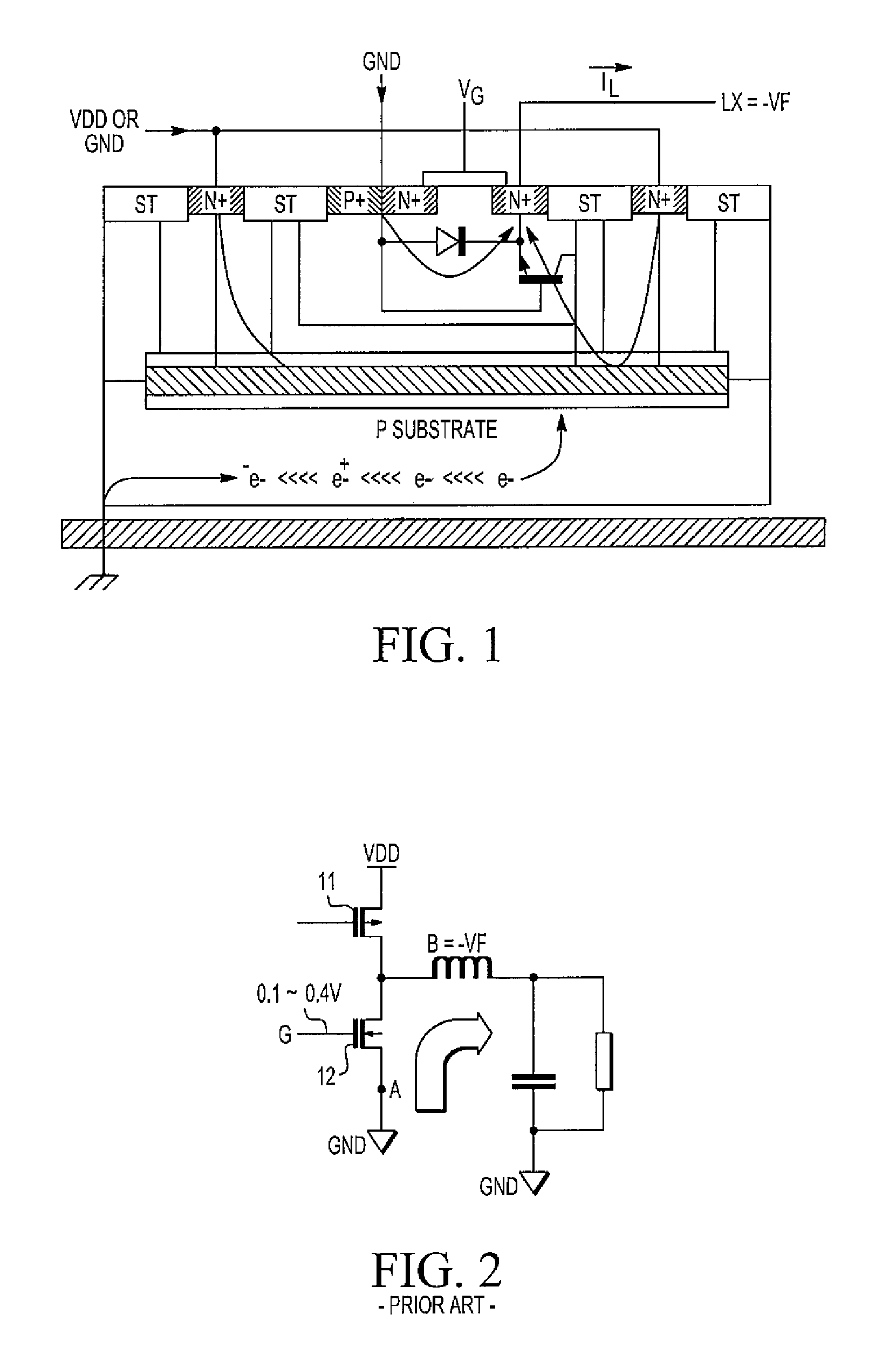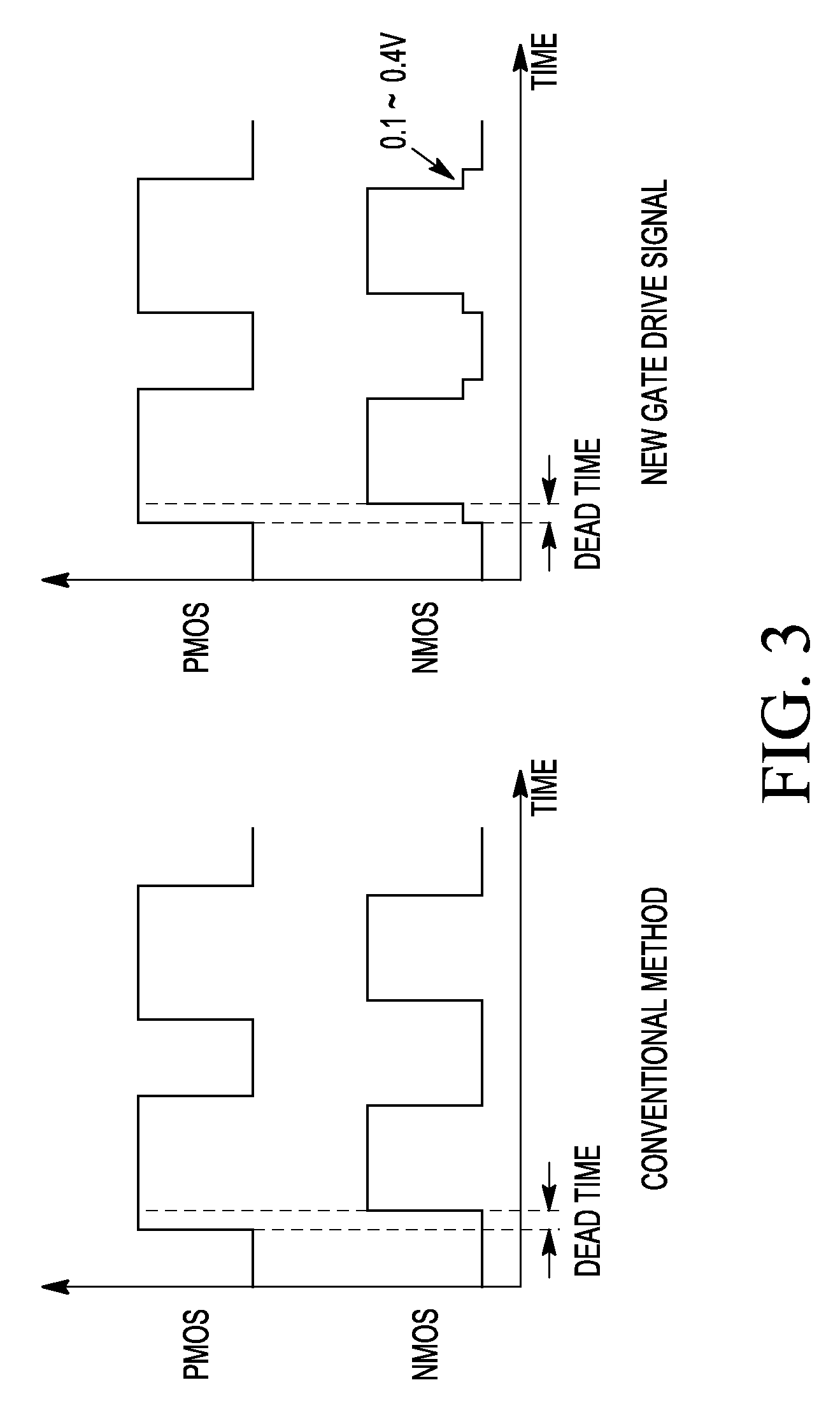Gate driver circuit for H bridge circuit
a gate driver and circuit technology, applied in the field of h bridge circuits, can solve problems such as increase the power dissipation, potential problems such as malfunction errors and performance degradation of circuits, and other problems
- Summary
- Abstract
- Description
- Claims
- Application Information
AI Technical Summary
Benefits of technology
Problems solved by technology
Method used
Image
Examples
first embodiment
As shown in FIG. 4A, in the present invention, both the inverting input and the output of the AMP 403 are coupled to the gate of the first NMOS device 412 via the second switch S2.
FIG. 4B is a schematic diagram showing a gate driver circuit according to a second embodiment of the present invention. As shown in FIG. 4B, the H bridge circuit according to the second embodiment of the present invention comprises a first PMOS device 411 and a first NMOS device 412. The first PMOS device 411 and the first NMOS device 412 are coupled in series between a voltage source VDD and a ground GND. A voltage output from a connection point of the first PMOS device 411 and the first NMOS device 412 is provided to a load LX. The first PMOS device 411 is coupled to the voltage source VDD, and the first NMOS device 412 is coupled to the ground GND. A gate driver 401 for the first PMOS device 411 is coupled to a gate of the first PMOS device 411, and a gate driver circuit 420 for the first NMOS device 41...
second embodiment
The driver circuit of FIG. 4B differs from the driver circuit of FIG. 4A in that in the present invention, the driver comprises two pre-drivers 402a and 402b, the first switch S1 comprises two first switches S1, and the second switch S2 comprises two second switches S2. The gate driver circuit 420 for the first NMOS device 412 further comprises a second PMOS device 421 and a second NMOS device 422 that are coupled with each other in series between the voltage source and the GND. A voltage output from a connection point of the second PMOS device 421 and the second NMOS device 422 is provided to the gate of the first NMOS device 412. The second PMOS device 421 is coupled to the voltage source, and the second NMOS device 422 is coupled to the GND. The outputs of the two pre-drivers 402a and 402b are coupled to a gate of the second PMOS device 421 and a gate of the second NMOS device 422, respectively, via the two first switches S1. The output of the AMP 403 is coupled to the gate of th...
PUM
 Login to View More
Login to View More Abstract
Description
Claims
Application Information
 Login to View More
Login to View More - R&D
- Intellectual Property
- Life Sciences
- Materials
- Tech Scout
- Unparalleled Data Quality
- Higher Quality Content
- 60% Fewer Hallucinations
Browse by: Latest US Patents, China's latest patents, Technical Efficacy Thesaurus, Application Domain, Technology Topic, Popular Technical Reports.
© 2025 PatSnap. All rights reserved.Legal|Privacy policy|Modern Slavery Act Transparency Statement|Sitemap|About US| Contact US: help@patsnap.com



